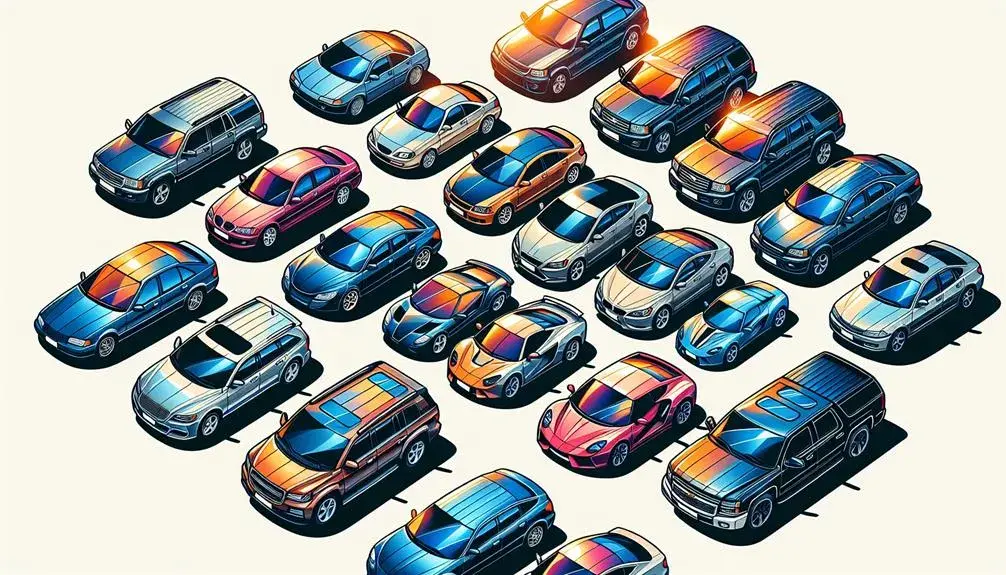
While the aesthetic enhancement that tinted windows afford vehicles is undeniable, the safety benefits and implications of the various types of automotive window tints are less universally acknowledged. By delving into the specifics of each tint type, including dyed, metalized, carbon, and ceramic, we can unravel the complex interplay between light transmission levels, glare reduction, UV radiation blocking, and heat rejection capacities. This not only offers a more comprehensive understanding of their role in vehicular safety but also their impact on driver comfort and vehicle energy efficiency. As we embark on this exploration, it becomes evident that the choice of window tint is not merely a matter of personal preference or style, but one with far-reaching consequences that warrant thoughtful consideration.
Understanding Automotive Window Tints
Delving into the realm of automotive window tints, it is crucial to comprehend the distinct types and their respective features that contribute to vehicle aesthetics, privacy, and solar control. Dyed window tints, for instance, are popular for their sleek appearance and affordable cost. Meanwhile, metalized film not only provides a polished look but also robust resistance to scratches and UV rays. Hybrid tints, combining dye and metallic layers, offer a balance of functionality and price. Carbon window tints excel in UV protection and temperature control. Lastly, ceramic tints, the most premium, deliver optimal clarity, solar control, and durability. Understanding these options helps vehicle owners make informed decisions, ensuring their investment enhances not only the vehicle’s look but also its comfort and longevity.
Safety Benefits of Window Tinting
Beyond enhancing aesthetics, automotive window tints also play a significant role in bolstering vehicle safety, offering benefits such as glare reduction, shatter prevention, and heightened privacy. Glare reduction is essential for drivers as it minimizes eye strain and enhances visibility, thus reducing the likelihood of accidents. Shatter prevention is another critical attribute of window tints; in the event of a collision, the tint can hold together shattered glass, preventing injuries from flying shards. Lastly, window tints offer an added layer of privacy, deterring potential thieves from intruding. As such, window tints not only offer a sleek look but also a safer driving environment, affirming their importance in the automotive world.
In conclusion, automotive window tints offer more than aesthetic appeal; they also provide vital safety benefits. Each variant, from ceramic to dyed tints, carries unique capabilities that extend beyond mere visual enhancement, symbolizing a shield against harmful UV rays, reducing heat and glare, and enhancing privacy. Therefore, these tints should not be viewed merely as cosmetic modifications, but as vital safety augmentations that can significantly improve the driving experience.